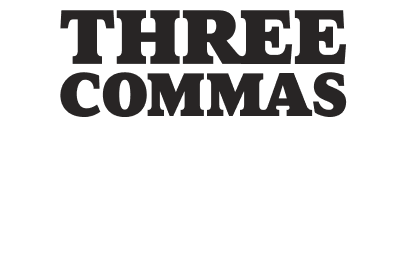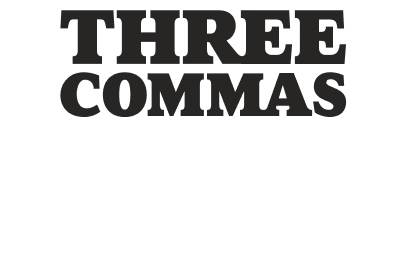We like to think of ourselves as autonomous, independent, non-conformist, and maybe even a bit alpha, but sorry. We’re constantly making decisions and forming opinions because of the people around us. Whether you like it or not, those bitches have a constant impact on everything we do.
Jonah Berger’s current book, Invisible Influence: The Hidden Forces That Shape Behavior, is a follow-up to his 2013 book Contagious: Why Things Catch On. Here, he drills down from the macro to the micro: how interpersonal relationships motivate and demotivate us on a daily basis.
It’s not all bad news: sometimes this influence leads us to make better choices, or to avoid bad decisions. We almost never realize this – until now.
Jonah is a marketing professor at the Wharton School of the University of Pennsylvania, and has been published in numerous newspapers and periodicals such as The New York Times, Science, and Harvard Business Review.
Here, he sheds some light into the invisible influences that make us who we are, even though we think we got this, solo. He also clues us in on how to use invisible influence in business negotiations, which is pretty sweet.
RON: Jonah, what the hell? Most of us like to think of ourselves as non-conformists and unique and apart from the crowd.

JONAH: There is a great episode of South Park where one of the kids wants to be a Goth, and he’s hanging out with the Goth kids. They’re hanging out a Starbucks-type place. They ask him, “Do you want a coffee?” He says, “No, I don’t really drink coffee.” And they say, “You can’t be a non-conformist if you don’t drink coffee.”
What I love about that example and that whole line of thinking in general is that even people who think they are not conformists end up looking like a lot of other people.
RON: You’re also saying that being influenced is not necessarily a bad thing.
JONAH: We talk about it as if it’s a four-letter word. We want to see ourselves as completely different from everyone else.
Influence actually helps us make better and faster decisions. Imagine having to pick a restaurant without ever looking at Yelp, or picking a babysitter or a new movie without ever asking a friend. Life would be a lot more complicated and a lot more difficult. And so, often influence helps us.
I think the reason we think it’s bad is that in American culture, we all like to think of ourselves as unique and special and that we are all distinct snowflakes and different from everybody else.
Certainly, we are not the same as everybody else. In no way, shape, or form am I saying that we are exactly like the person next to us. We’re certainly different from them, but really what we are is a mix of everyone else who is around us.
There is a saying: you are a mix of your five best friends. I think that’s true. We’re not identical to our five best friends, but if you put our five best friends together, and you create overlapping circles, we would be the mix of those things.
We’re constantly being influenced by the folks around us: our friends, family members, the folks we work with.
RON: The purpose of your book is to show that if we can understand the influence, we can harness its power.
JONAH: By recognizing how it works, we can take advantage of it both at home and at work.
RON: At the opposite end of our desire to be unique, we also want to fit in, and not be so different. How do you reconcile those two conflicting desires?
JONAH: There are very different motivations that seem opposing.
Studies will show that if we tell you that you are exactly the same as everyone else, you get upset. If we tell you that you are completely different from everybody else, you will also get upset.
You may do everything you can to show that you are different, and yet, if you are told that you are completely different from everybody else, you start to worry: “Maybe I’m doing something wrong. Maybe people won’t like me.”
So we have these two competing motives: to be similar and different at the same time.
It’s not one versus the other; it’s a combination of both of them. It’s called optimal distinction: similar but different at the same time.
RON: Optimal distinction is a good way for entrepreneurs to think of their products or services.
JONAH: I think this is a good way to think about introducing new ideas if you have a new product or service that you want to become successful.
It’s all about being different. You focus on how completely different this product or startup is from everything else that came before it. But different isn’t [always] successful. If something seems too different or scary, people may not want it.
Right in the middle is just right. It’s like Goldilocks: too similar – not so good; too different – not so good. But in between is just right.
It’s a Goldilocks effect when we get that mix of similarity and difference: similar enough to feel familiar, but different enough to feel novel and change of pace.
RON: What about the old standby “trusting your gut?” Isn’t that what we’re always told to do? How does influence play into gut trusting?
JONAH Influence is our gut. It’s not our gut versus influence.
Often, our gut feelings come from influence. Imagine walking into a store and seeing a shirt and saying, “I love that shirt.” We call that our gut. Why? Because we think that choice was driven by our own preferences.

We don’t buy the shirt to fit in or to be like someone else. But we may have bought the shirt because we saw other people wearing a similar shirt, or a similar cut or a similar style. We may not realize that’s why we like it, but that’s what winds up shaping our behavior.
It’s called mirror exposure. The more you see something, the more you like it. The more familiar it feels, the more you like it. We think that’s our gut, but it’s actually influence shaping our behavior through what we think is our gut.
RON: Peer pressure is very important to us when we are teenagers, but does it play a part in influence in adulthood?
JONAH: Certainly. Many companies describe themselves as “The Uber of…” There are huge herd effects in what areas people want to live in, what styles of clothing people wear, what languages people use.
We think of peer pressure as negative. We like to think that our choices are being driven by ourselves. We don’t realize that peer pressure shapes us whether we are kids or adults.
RON: How does invisible influence affect our personal relationships?
JONAH: On a first date, the more language that overlaps, the more likely you are to go on a second date. The fact that our language is similar makes us like someone more.
At the same time, there is some evidence that being different is also good. We don’t want someone who is exactly like us. We may want someone who is a little bit different. It ends up being a little bit of both. Our potential partners are not exactly the same and not completely different. Again, it’s somewhere in the middle: familiar enough, but different enough to be distinct.
RON: How does invisible influence work in business dealings?
JONAH: Imagine you and I are stuck in a tough negotiation - maybe it’s the price of a contract or maybe you are buying my company. It doesn’t look like we are going to figure out a way out. We seem far apart. We don’t trust one another.
Researchers have found a way to reach an outcome when all looks like it is lost. The trick: mimicking or mirroring their negotiating partner; suddenly imitating – whether it’s the language, the mannerisms, or the facial tics of the person they are talking to.
If you would lean back in your chair, well, maybe I would lean back in my chair as well. If you crossed your arms, maybe I would do the same. Not so obviously that I could tell that you are mimicking, but subtly.
It’s the same thing in a sales context. Mimicry creates a sense of affiliation, like we are part of the same tribe. It increases influence and facilitates persuasion, because it creates a sense that we are part of the same tribe. Don’t just listen – emulate them. Be a chameleon, mirroring their behavior.
RON: The new power players and CEOs wear T-shirts, jeans and sneakers. You call this invisible influence “countersignaling.” How so?
JONAH: All of these things are a response to the environment. How you dress, what you drive, the music you listen to -- what does it say about you?
We used to think that dressing up signaled success in business, or having a flashy car signaled wealth. The problem is: when other people come along and imitate those signals that aren’t true members of that group, [those signals] start to lose their meaning.
High-powered business executives always wear suits. Great. So when we see someone wearing a suit, we know that they’re a high-powered business executive. But when not-so-high-powered business executives start wearing suits, we don’t know if they are the real thing or a wanna-be or a poser.
People in startup cultures don’t want to be thought of as some old, fuddy-duddy business leader. They want to say, “I’m part of the new school, the new generation.” They are trying to contrast themselves. So instead, they dress down. They’re saying, “I don’t have to dress up to be successful.” Dressing down becomes just as strong a signal as dressing up.
RON: The biggest mystery of all: Brooklyn hipsters, lumbersexuals, punk rockers, goths, hippie chicks. They are all claiming their individuality, but they all tend to look and dress alike.
JONAH: Birds of a feather flock together. People who like similar things tend to hang out with one another. People who tend to like similar music tend to like similar clothes. One way to think about it: if we both like movies a lot, we both may like popcorn a lot.
These groups are trying to diverge from the mainstream; they’re trying to be different. Hipsters and punk rockers don’t want to look like the mainstream, but they don’t want to be the only person dressed that way, because no one else can tell what it means. The challenge is: multiple people have to do something for it to be a signal. Signals are socially constructed.
RON: We’re not completely clueless to invisible influence, right?
JONAH: We do see influence. It’s not like we never see it. But the only place we never see influence is in ourselves. We don’t often see how we can use influence to affect others.
The goal of this book was to help people spot influence in the world around them, and by understanding that influence, living happier and more successful lives. When we understand how it works, only then can we take advantage of it.
Click here to find out more about Jonah and his work.


